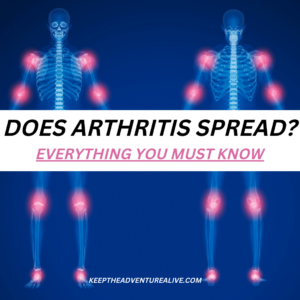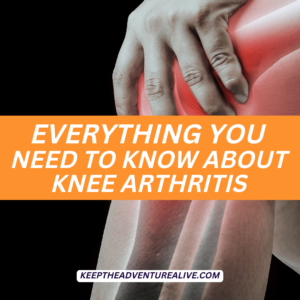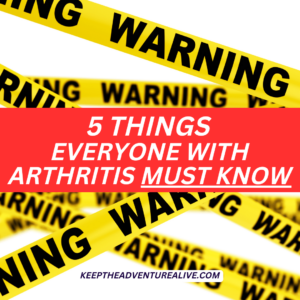The simple answer to “Does osteoarthritis spread?” is yes, it can. But, not in the way you might think. Many people believe osteoarthritis spreads just like a disease, thinking of it as like a bacteria or other organism that travels and effects other joints. This is NOT how osteoarthritis progresses. Instead, it can be more of an indirect spread. The good news is, it can be stopped with these 3 strategies below.
In order to understand how osteoarthritis spreads and progresses, it’s important to understand how osteoarthritis occurs in the first place. This will help the prevention strategies to make more sense later in this article.
What is osteoarthritis?
Osteoarthritis (OA) is a complicated condition that impacts one or multiple joints like the knee, hip, spine and shoulder. Common symptoms include, gradual onset of localized joint pain, loss of range of motion and/or joint stiffness especially in the morning.
It was once thought that osteoarthritis was simply due to “wear and tear” of the joint, meaning you overused your joint through repetitive movement, exercise, etc. which thus caused the pain, loss of mobility, etc. With this way of thinking, relief was seemingly unachievable without a joint replacement.
As researchers learned more about the condition, they found that it is much more complicated than the proposed mechanical issue because they noticed:
- Sedentary individuals were becoming affected, primarily in the knees
- When someone experienced an injury such as to the ACL or meniscus in the knee, they were at a much higher risk of OA
- Running does not increase the risk for OA
- Obesity is correlated with hand OA
What causes osteoarthritis?
These findings highlighted that there is more to the condition than “wear and tear”. Instead, there is a disruption of the normal cell processes that help to maintain joint health and a presence of chronic, low-grade inflammation.
Inflammation can disrupt cell processes, delay or halt healing, lead to break down of the joint and cartilage and fire pain signals. But how does inflammation come to be? A few reasons are:
- Increased fat mass can lead to increased inflammatory cells which is why obesity and metabolic conditions are a risk factor for osteoarthritis development and progression
- Increased age can lead to cells to lose vital strength and are more at risk for producing inflammatory cells which is why osteoarthritis is typically seen in those over 50 (but can be seen in younger individuals too)
- A previous injury can elevate inflammatory levels immediately after injury and levels can persist after healing too.
- Abnormal and excessive loading of the joint can activate certain processes that can alter the cartilage- this is typically brought with muscle weakness and movement compensations that lead to excessive stress in certain areas of the joint
- Disruption in gut microbiome– meaning the foods you eat and their impact on your body’s chemical balance. Foods lacking certain minerals and nutrients can lead to adverse reactions in the gut which can in turn increase inflammation production.
Think about it like this: Joints are each like their own well-oiled machine. When all the parts are working properly and processes are working properly- the machine is efficient and able to do it’s job. When something disrupts the process or a certain part malfunctions, it disrupts the entire function of the joint. You don’t always need to replace the entire machine, sometimes it just needs a little oil or attention to a certain part of the machine.
Your joint functions in the same vain. If all the cells and parts are doing their job, the cartilage is nourished, the cells are able to repair themselves and work properly. If one of these factors above disrupts any of the processes, you may notice more irritation and/or slower/no repair process at all. This can lead to breakdown of the cartilage and other parts of the joint.
Changing the factors that you have control over can make a big difference in getting the joint back to functioning properly, reducing irritation and pain.
Finding out what causes the condition is one of the first steps in understanding and answer the question, does osteoarthritis spread?
Does osteoarthritis spread?
Inflammation circulating in the body above the normal amounts can begin to impact cell processes all over the body.
Osteoarthritis doesn’t spread in the way that it seems on the surface.
In my experience, osteoarthritis begins to spread to other areas of the body from indirect reasons. The primary reasons it begins to affect other joints include:
- Movement compensations: Due to pain in one joint, for example the knee, may lead you to change the way you move which can then in turn make your hip hurt or your back.
- Muscle weakening: When experiencing pain, you may move less. With less movement, you utilize your muscles less. This in turn can lead to muscle weakness and less support to the joints. With weaker muscles, standing up from a chair, walking, stair climbing can all become difficult and cause other joints to become irritated.
- Loss of mobility: If your joint becomes stiffer, it requires other joints to work harder. For example, with knee pain, you may begin to experience ankle or foot pain as those joints may be attempting to make up for the loss of motion in the knee.
It is also important to note that elevated inflammation markers from uncontrolled high blood sugars, excess body fat, inactivity, lack of sleep and excessive consumption of inflammatory foods can begin to stress other areas of the body as well.
What you can do to stop the spread
The answer to does osteoarthritis spread, is technically yes. But, the good news is, you have more control over the spread than you think. Osteoarthritis doesn’t inevitably progress. Each person is going to have a different experience.
There are 5 things to focus on to help stop the spread of osteoarthritis and reduce the severity of the symptoms.
1. Movement
Muscles are one of the best joint support that exists. Not only because your muscles help to absorb stress but also muscles play an integral role in the way your body moves.
Building muscles to support large joints like the knee, hip, spine and shoulder can help to optimize the way you move and prevent compensations- even if you do not experience pain in that specific joint.
One of the BIGGEST problems I see as a physical therapist is many people only focus on the painful joint. For example, with knee arthritis, they only tend to do exercises that challenge the knee and build the muscles around the knee.
Instead, to prevent the progression of osteoarthritis and to prevent the spread of it, FULL BODY strength is important.
This is why my arthritis workout membership, Adventurers for Life, focuses on strengthening the full body. Not only can you help the painful joint but you can also help to prevent pain and stiffness from spreading to other joints.
Take these wins from members inside of Adventurers for Life who didn’t realize the importance of upper body strengthening even with knee and hip osteoarthritis!
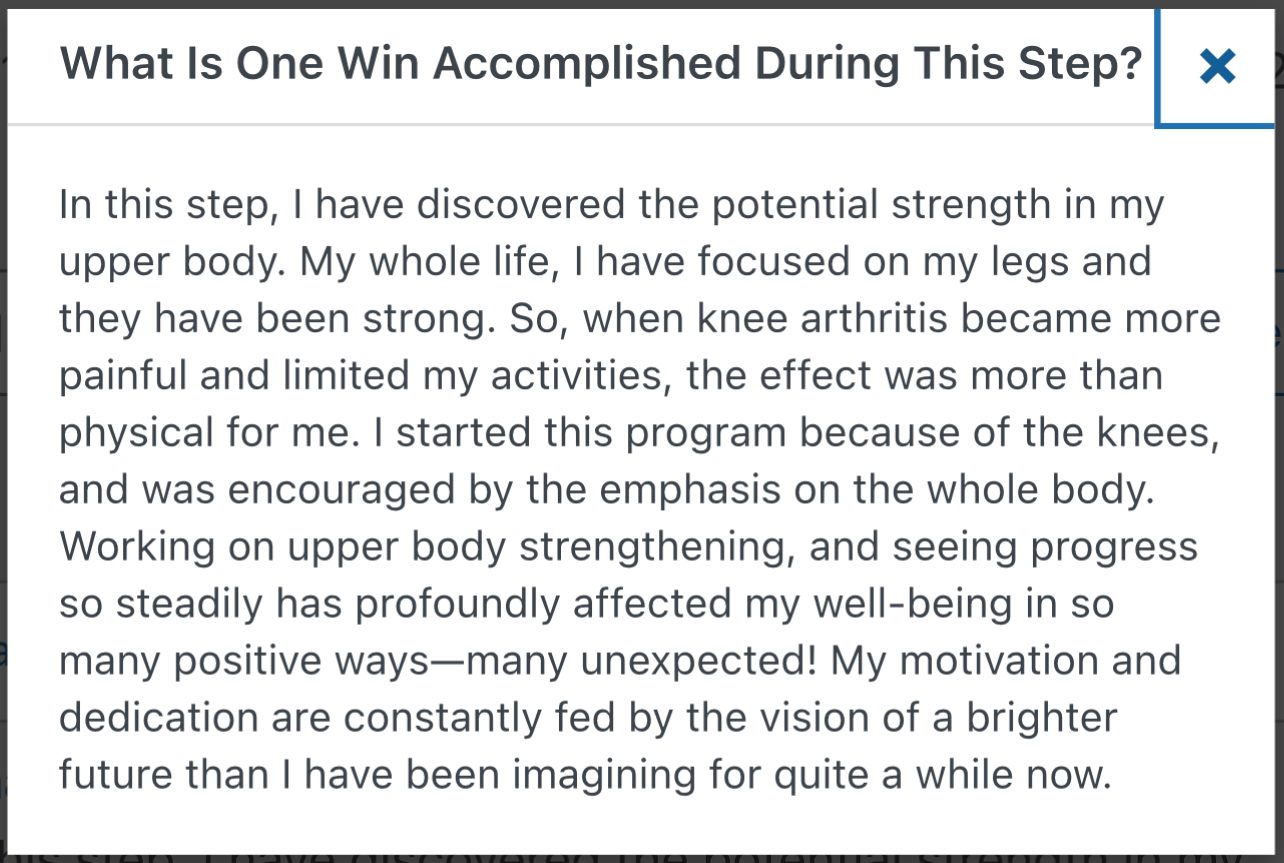
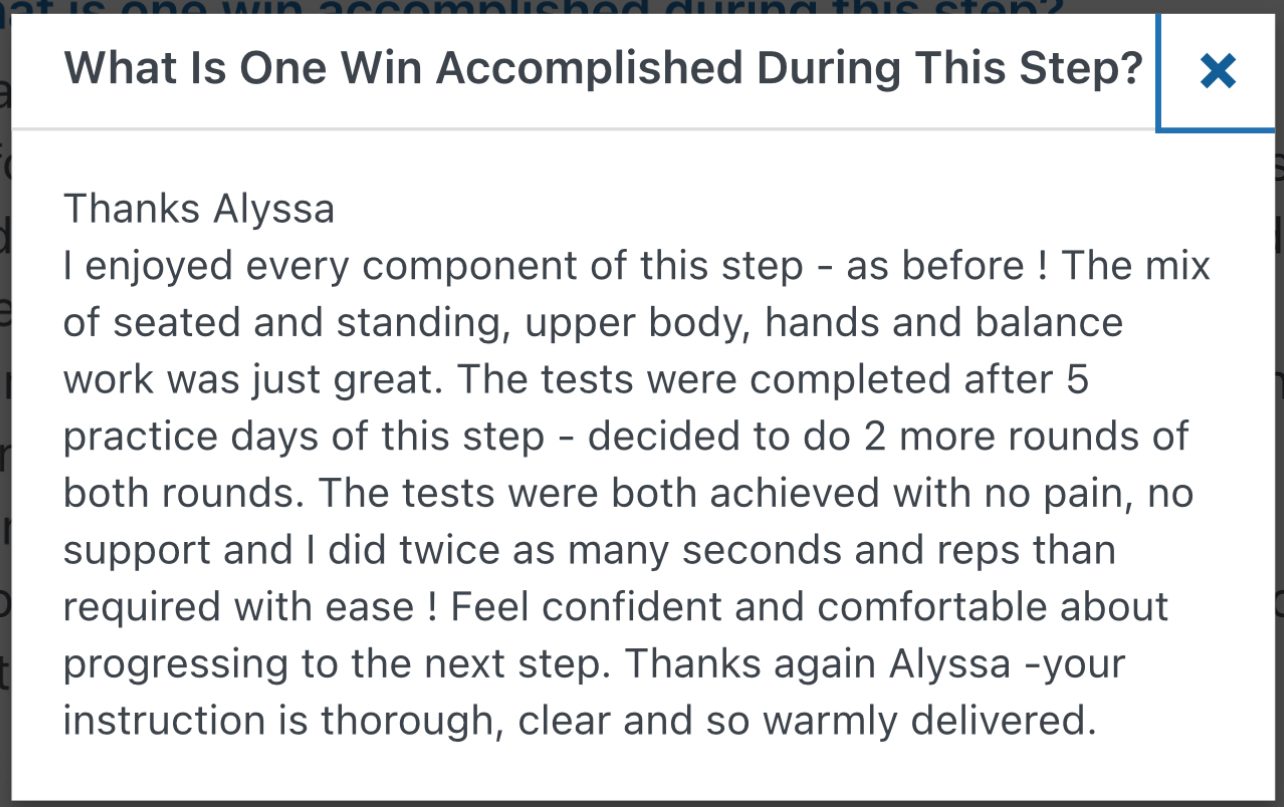
In order to get started on a path to finding the best full body strengthening for osteoarthritis without making your joints angry- the free trial for Adventurers for Life is a great next step.
2. Sleep Quality
Prioritizing sleep is an integral aspect in keeping inflammatory levels lower. It has been proposed that lack of sleep duration, efficiency and longer wake times can contribute to higher circulating inflammatory markers.
One study discovered poor sleep quality may increase risk for developing OA.
There are a few strategies to improve sleep quality especially if pain and stiffness are keeping you up at night.
- Find a balance with movement: too much or too little movement can lead to increased joint pain, joint stiffness and can also increase risk for muscle cramping. See the video below on how to mitigate muscle and leg cramps at night to reduce sleep disruption.
- Find a relaxing activity at night to prepare yourself to sleep. Some common examples include: journaling, a warm epsom salt bath (I love the Village Naturals brand), using a heating pad before bed (but not while sleeping), gentle self-massage to painful joint(s)/muscle(s).
- Find other sleep tips in this article
3. Prioritizing the right foods
Anti-inflammatory diets and ways of eating have been studied fairly extensively due to the true power food has over full body health. The difficult part is, food is almost never talked about at traditional medical appointments when discussing proper management for osteoarthritis.
It has been shown that foods high in saturated fats for example have proinflammatory properties.
The Mediterranean Diet has been shown to be helpful in reducing inflammation. This includes a primary focus on fruits, vegetables, fish, whole foods and limitations in both alcohol and red meat.
If you’d like to dive deep into this topic and how food plays a role in inflammation, check out this scientific article HERE.
Certain aspects of foods work differently to reduce inflammation and promote health and aging. Really, it comes down to becoming aware of what you are putting in your body and place an emphasis on the foods that you know are good for you and reducing the ones that aren’t.
There are also other aspects of metabolic health like insulin resistance that can increase inflammation in your body. Inside of Adventurers for Life, there are multiple talks with experts surrounding insulin resistance, protein and supplements as well as an anti-inflammatory cooking class!
Conclusion:
When asking “does osteoarthritis spread”, now you know the answer is a bit more complicated than it seems. Regularly engaging in activities that are proinflammatory like lack of exercise, unhealthy foods, lack of sleep and lack of muscle strengthening can contribute to osteoarthritis moving to different joints.
Mechanics when moving and doing different activities are also extremely important so it’s important to optimize how your body moves with strength and balance.
You may not be able to control ALL aspects of osteoarthritis but you have more control than you think.
If you’re ready to take action right now and give your body what it needs to not only feel better now but reduce the risk for progression of osteoarthritis in the future, Adventurers for Life is waiting.
Alyssa Kuhn
References:
- van den Bosch MHJ. Inflammation in osteoarthritis: is it time to dampen the alarm(in) in this debilitating disease? Clin Exp Immunol. 2019 Feb;195(2):153-166. doi: 10.1111/cei.13237. Epub 2018 Nov 28. PMID: 30421798; PMCID: PMC6330652.
- Sanchez-Lopez E, Coras R, Torres A, Lane NE, Guma M. Synovial inflammation in osteoarthritis progression. Nat Rev Rheumatol. 2022 May;18(5):258-275. doi: 10.1038/s41584-022-00749-9. Epub 2022 Feb 14. PMID: 35165404; PMCID: PMC9050956.
- Stromsnes K, Correas AG, Lehmann J, Gambini J, Olaso-Gonzalez G. Anti-Inflammatory Properties of Diet: Role in Healthy Aging. Biomedicines. 2021 Jul 30;9(8):922. doi: 10.3390/biomedicines9080922. PMID: 34440125; PMCID: PMC8389628.
Disclaimer: This video is for general informational purposes only. It should not be used to self-diagnose and it is not a substitute for a medical exam, cure, treatment, diagnosis, and prescription or recommendation. It does not create a doctor-patient relationship between Dr. Kuhn and you. You should not make any change in your health regimen or diet before first consulting a physician and obtaining a medical exam, diagnosis, and recommendation. Move Well Age Well, LLC and Dr. Alyssa Kuhn, PT, DPT are not liable or responsible for any advice, course of treatment, diagnosis or any conclusions drawn, services or product you obtain through this post, video or site. Complete all exercises at your own risk.

